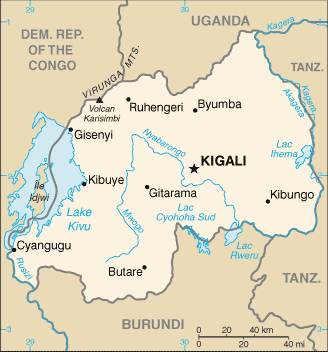Rwanda, a small country in central Africa, is populated by three main groups. The majority of the population are the Hutu, while a minority are Tutsi and a smaller number are Twa. Although Hutu and Tutsi are often described as ethnic or racial categories, they are more like status or class differences, and both groups share a language and culture. The Twa are an indigenous population with their own traditions. The differences between the Hutu and Tutsi were hardened under the colonial rule of Germany and later Belgium. The colonizers originally put the Tutsi in charge, but the Hutu were placed in charge not long before independence.
Under Hutu rule after independence in 1962, Tutsis faced discrimination, persecution, and violence, causing many to flee to neighboring countries. In 1990, the Rwandan Patriotic Front (RPF), a Tutsi rebel group, invaded Rwanda from Uganda. The 1993 Arusha Accords were supposed to bring an end to this civil war through a power-sharing agreement, but this angered Hutu extremists, who began a campaign of hate against the Tutsi, forming militias such as the Interahamwe (“those who attack together”) and preparing lists of Tutsi and moderate Hutu. When the plane carrying Rwanda’s Hutu president was shot down by an unknown force in April of 1994, the extremists blamed the Tutsi and began a campaign of genocide.
Violence spread quickly throughout the capital and into the rest of the country. Hutu militias, with the aid of the Rwandan army and the local population, began systematically slaughtering Tutsi men, women, and children. Tutsi were often killed in their own villages or in their churches where they sought refuge. Most of the killing was done by hand using machetes or clubs. Tutsi women were also subjected to sexual violence – most women who survived the Rwandan genocide are rape survivors, many of whom live with HIV contracted during the genocide.
When the killing was finally brought to an end by the RPF’s overthrow of the Hutu Power regime in July of 1994, approximately 75% of the total Tutsi population and more than 30% of the Twa had been killed while the world watched. After the RPF’s victory, many Hutu, including both civilians and genocide perpetrators, fled into neighboring Uganda and the Democratic Republic of the Congo. Their presence has continued to spark violence in the region. Meanwhile, in Rwanda many Tutsi survivors still live in the same villages as the people who murdered their families, friends, and neighbors.
The International Criminal Tribunal for Rwanda (ICTR) was founded in Arusha, Tanzania to try genocide perpetrators. It has resulted in important rulings, but has focused only on perpetrators at the highest level. By some estimates, hundreds of thousands of Rwandans were perpetrators, and many languished in prison for years without a hearing. The gacaca (“on the grass”) courts acted from 2005-2012 as an alternative system that involved the perpetrator’s community and offered reduced sentences for acknowledgements of guilt. Community service was often an important part of a perpetrator’s sentence to involve them in repairing the damage wrought during the genocide.
Source:
Jones, Adam. Genocide: A Comprehensive Introduction. 3rd ed. London: Routledge, 2017.

CIA World Factbook: https://www.cia.gov/library/publications/the-world-factbook/geos/rw.html